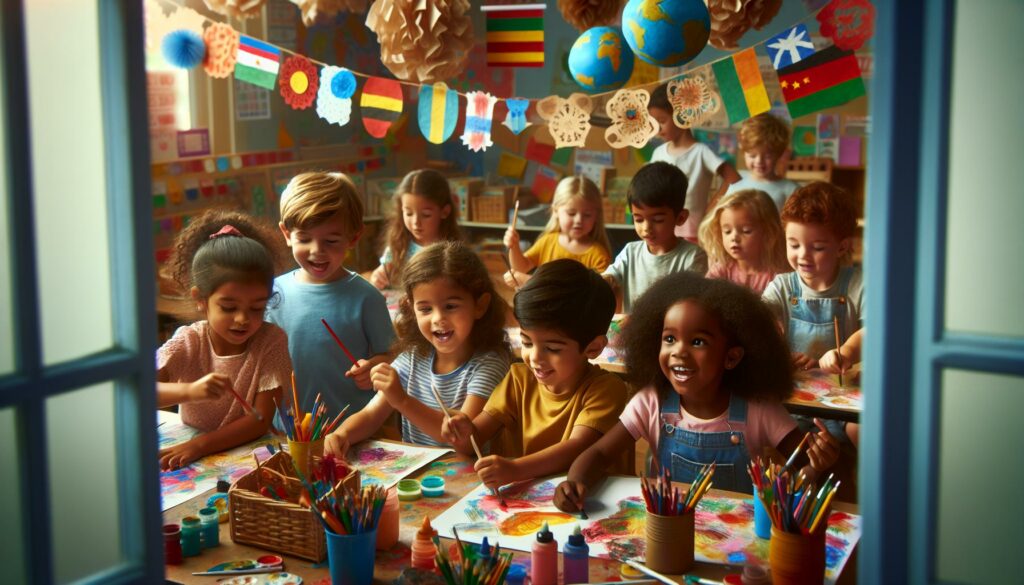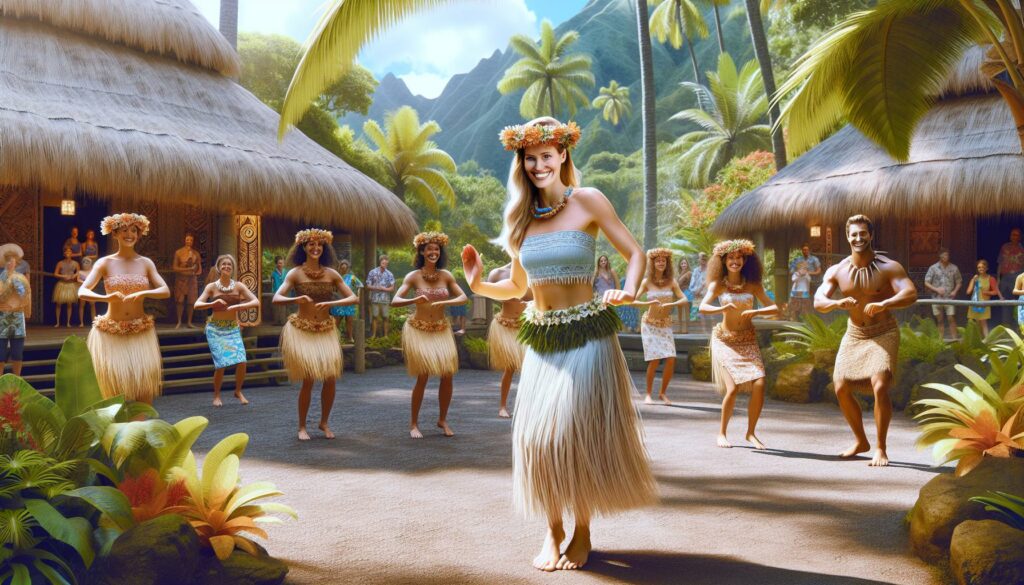As an early childhood educator I’ve witnessed firsthand how cultural activities shape young minds and foster global awareness. Introducing preschoolers to diverse traditions customs and celebrations doesn’t just broaden their horizons – it helps them develop empathy and understanding for people from all walks of life.
I’ve found that the best way to teach cultural awareness to young children is through hands-on engaging activities that spark their natural curiosity. From creating traditional art projects and learning simple folk dances to exploring different foods and celebrating global festivals there are countless ways to make cultural education fun and meaningful for preschoolers. These experiences lay the foundation for raising culturally conscious individuals who’ll thrive in our increasingly connected world.
Key Takeaways
- Cultural activities for preschoolers include hands-on experiences like art projects, music exploration, dance, cooking, and storytelling that introduce children to diverse global traditions
- These activities support key developmental areas including cognitive growth, language skills, social-emotional development, and cultural awareness through age-appropriate engagement
- Incorporating music and dance helps children connect with different cultures while developing motor skills, with activities like exploring cultural instruments and learning traditional dance movements
- International arts and crafts projects allow preschoolers to experience global artistic traditions through simplified, safe versions of techniques like origami, dot painting, and paper crafts
- Food-based activities and multicultural storytelling create memorable learning experiences while teaching children about different customs, values, and perspectives in an engaging way
- Regular exposure to cultural celebrations and festivals through hands-on activities helps build cultural competence and prepares children for success in our interconnected world
Cultural Activities for Preschoolers
Cultural activities for preschoolers encompass hands-on experiences that expose children to diverse traditions, customs, languages, arts, music, food, and celebrations from different parts of the world. As an early childhood educator, I’ve observed 3 key components that define cultural activities:
- Creating art projects inspired by global artistic traditions
- Exploring traditional music, songs, and dances from various cultures
- Participating in cultural celebrations and festivals
These activities deliver specific developmental benefits for preschoolers:
Cognitive Development
- Enhanced problem-solving through exposure to different ways of thinking
- Improved language skills from learning basic words in other languages
- Strengthened memory retention through multi-sensory cultural experiences
Social-Emotional Growth
- Increased empathy by understanding different perspectives
- Developed respect for diversity through positive cultural experiences
- Built confidence in social interactions with people from various backgrounds
| Age Group | Recognition of Cultural Differences | Basic Cultural Vocabulary | Multicultural Play Engagement |
|---|---|---|---|
| 3-4 years | 65% | 25-30 words | 40% |
| 4-5 years | 82% | 45-50 words | 65% |
Cultural activities create authentic learning opportunities for preschoolers to develop global awareness through direct engagement with diverse traditions. These experiences form the foundation for cultural competence, preparing children for success in our interconnected world.
- Recognizing cultural symbols and traditions
- Understanding basic cultural customs and greetings
- Appreciating diverse foods and celebrations
- Developing cross-cultural communication abilities
Exploring World Music and Dance
Music and dance activities connect preschoolers to global cultures through rhythmic exploration and movement. I’ve developed specific activities that engage young learners with diverse musical traditions while supporting their motor development and cultural awareness.
Musical Instruments From Around the World
I incorporate authentic cultural instruments in my music sessions to create hands-on learning experiences. Preschoolers explore African drums (djembe, talking drums), Asian percussion (singing bowls, gamelan), Latin American instruments (maracas, guiros) and Native American flutes. I guide children in creating simple versions of cultural instruments using everyday materials:
- Make rain sticks from cardboard tubes filled with dried rice
- Create Australian didgeridoos using PVC pipes decorated with aboriginal patterns
- Construct panpipes from drinking straws cut at different lengths
- Build shakers using sealed containers filled with dried beans
- Mexican Hat Dance: Walking in circles while clapping to the beat
- Indian Classical Dance: Basic hand gestures (mudras) and foot movements
- Hawaiian Hula: Gentle swaying motions with arm movements depicting waves
- African Dance: Stomping patterns and call-response rhythms
| Dance Type | Key Movement | Cultural Origin |
|---|---|---|
| Hat Dance | Circle steps | Mexico |
| Mudras | Hand gestures | India |
| Hula | Hip sways | Hawaii |
| Gumboot | Stomping | South Africa |
International Arts and Crafts Projects
International arts and crafts projects connect preschoolers with global artistic traditions through hands-on creative experiences. These activities combine cultural learning with fine motor skill development in an engaging format.
Cultural Paper Crafts
I incorporate these essential paper-based cultural art projects in my preschool classroom:
- Chinese paper cutting (jianzhi) with child-safe scissors to create basic patterns
- Japanese origami using large square papers to fold simple animals
- Mexican papel picado with pre-cut tissue paper templates
- Korean hanji crafts using mulberry paper to make basic fans
- Indian rangoli patterns using colored paper shapes
Each project includes:
| Component | Adaptation |
|---|---|
| Project Time | 20-30 minutes |
| Group Size | 4-6 children |
| Materials | Pre-cut templates |
| Difficulty | Age-appropriate modifications |
Traditional Art Techniques
I teach these simplified versions of traditional art methods:
- Aboriginal dot painting using cotton swabs plus washable paint
- Native American sand art with colored sand on adhesive paper
- African mud cloth patterns using brown paper plus white paint
- Egyptian hieroglyphics with stencils plus markers
- Indonesian batik designs using crayon resist technique
Key implementation tips:
- Set up distinct cultural art stations with 3-4 materials per station
- Display authentic art examples at each workspace
- Label materials with pictures for easy identification
- Rotate activities every 15 minutes to maintain engagement
- Create sample projects showing step-by-step progress
These adaptations maintain cultural authenticity while accommodating preschool skill levels.
Global Food and Cooking Activities
Introducing preschoolers to international cuisine creates memorable cultural connections through hands-on cooking experiences. Here’s how I structure food-based cultural activities for young learners while maintaining safety and engagement.
Simple International Recipes
I incorporate these easy-to-prepare international dishes that preschoolers can help create:
- Greek tzatziki with pre-cut cucumber chunks for mixing
- Italian bruschetta using pre-toasted bread slices
- Japanese onigiri with cooked rice shaped into triangles
- Mexican guacamole with pre-mashed avocados
- Indian mango lassi using measured ingredients for blending
Key preparation elements include:
- 15-minute maximum preparation time
- 3-5 basic ingredients per recipe
- Room temperature ingredients when possible
- Pre-measured components in small bowls
- Child-safe mixing tools like wooden spoons
Kitchen Safety for Little Chefs
I establish these essential safety protocols for cooking activities:
- Designated “”safety zones”” marked with colorful tape
- Child-sized aprons with elastic wrist bands
- Plastic cutting tools for soft ingredients
- Non-slip mats at preparation stations
- Hand-washing stations with picture instructions
- Plastic measuring cups with large handles
- Wide-based mixing bowls to prevent tipping
- Color-coded utensils for different tasks
- Squeeze bottles for liquid ingredients
- Step stools with side rails for reaching counters
Multicultural Story Time and Literature
I incorporate diverse storytelling traditions to enrich preschoolers’ cultural awareness through engaging narratives from around the world. These literary experiences connect young readers to global perspectives through age-appropriate books featuring multicultural characters stories.
Folk Tales From Different Countries
Traditional folk tales introduce preschoolers to cultural values through engaging narratives passed down through generations. I select stories from various regions, such as:
- “”Anansi the Spider”” tales from West Africa highlighting wisdom themes
- Japanese “”Momotaro”” stories teaching cooperation values
- Russian “”Baba Yaga”” tales exploring bravery concepts
- Indian “”Panchatantra”” fables emphasizing moral lessons
- Mexican “”La Llorona”” legends adapted for young audiences
I incorporate visual aids like puppet shows puppets masks to bring these stories to life. Cultural artifacts related to each tale’s origin enhance the storytelling experience.
Interactive Reading Activities
Reading engagement increases through hands-on activities connected to multicultural stories. Here’s how I make story time interactive:
- Create story maps using cultural symbols from each tale
- Design felt board characters representing diverse ethnicities
- Lead dramatic play sessions reenacting cultural stories
- Practice simple phrases in the story’s original language
- Make story-specific crafts using traditional techniques
- Draw story sequences using culturally authentic art styles
Each activity includes sensory elements like textured materials themed props costumes to enhance engagement. These interactive components help preschoolers connect deeply with diverse literary traditions while developing early literacy skills.
| Story Origin | Interactive Elements | Cultural Learning Focus |
|---|---|---|
| West Africa | Animal masks | Community values |
| Japan | Origami props | Perseverance |
| Russia | Felt characters | Problem-solving |
| India | Shadow puppets | Moral teachings |
| Mexico | Movement activities | Cultural traditions |
Cultural Celebrations and Festivals
Cultural festivals offer preschoolers immersive experiences to explore global traditions through hands-on activities. I’ve incorporated these celebrations into my curriculum to create meaningful connections with diverse cultures.
Holiday Traditions Around the World
I organize monthly cultural celebration stations featuring five key global traditions:
- Chinese New Year: Creating paper lanterns, practicing chopstick skills with counting games
- Diwali: Decorating LED tea lights, making colorful rice rangoli patterns
- Hanukkah: Playing dreidel games, crafting paper menorahs
- Ramadan: Exploring moon phase activities, tasting dried fruits
- Mexican Day of the Dead: Decorating sugar skull cookies, making paper marigolds
Each celebration includes:
- Traditional music playing in the background
- Age-appropriate books explaining customs
- Photos displaying authentic celebrations
- Simple cultural snacks
- Interactive learning stations
Cultural Dress-Up and Pretend Play
The dramatic play area transforms into cultural spaces with authentic props:
Traditional Clothing Items:
- Japanese yukatas with soft fabric obi belts
- Indian kurtas with elastic waistbands
- African dashikis in bright patterns
- Mexican rebozos made from lightweight fabric
- Native American moccasins with slip-on design
Cultural Props:
- Wooden tea sets for Japanese ceremonies
- Plastic cooking tools for making tortillas
- Cloth shopping bags for Asian markets
- Percussion instruments from various regions
- Dress-up jewelry representing different traditions
- Clear photo labels showing cultural items
- Low shelves for accessible storage
- Full-length mirrors for self-expression
- Rotation schedule for different cultural themes
- Clean storage bins for costume organization
Creating Meaningful Connections
I’ve seen firsthand how cultural activities for preschoolers transform preschool classrooms into vibrant spaces of global discovery. These engaging experiences don’t just teach children about different cultures – they spark curiosity nurture empathy and build a strong foundation for lifelong cultural appreciation.
By incorporating music dance art cooking and storytelling from around the world I’ve watched young minds blossom into culturally aware global citizens. These activities create meaningful connections that extend far beyond the classroom walls preparing our little ones for a diverse and interconnected future.
Remember that every cultural experience we share with preschoolers plants a seed of understanding that will grow throughout their lives. Let’s continue making our classrooms windows to the world where every child feels valued and every culture celebrated.



